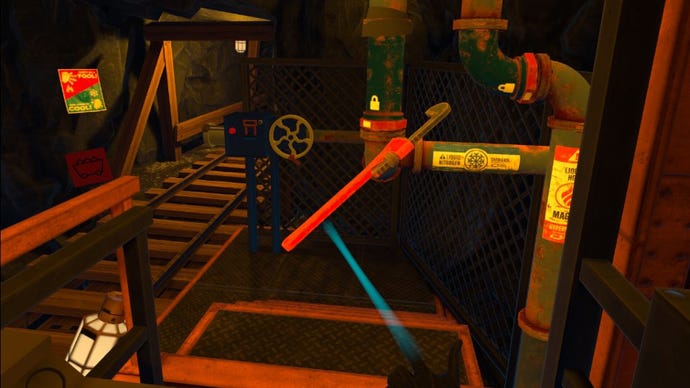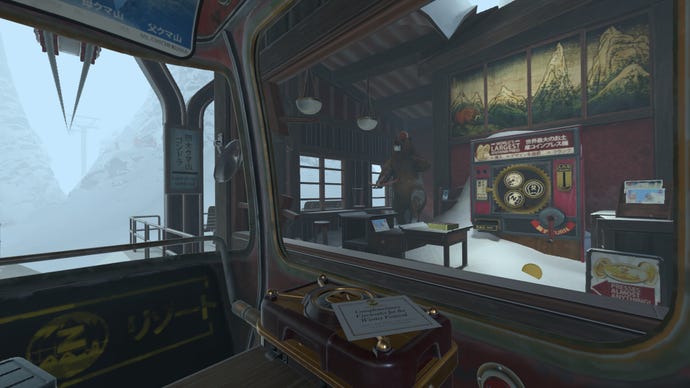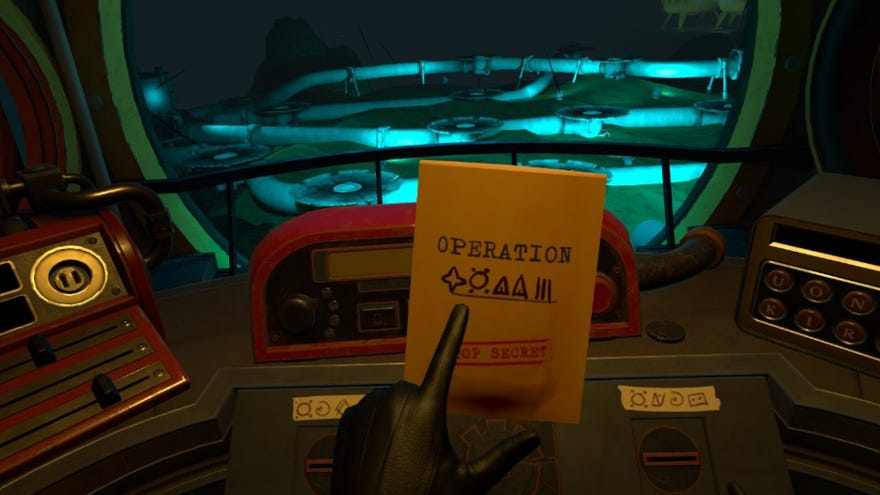Reality Bytes: I Expect You To Die 3 is a fun telekinetic-Bond spy caper
Couch Potat00
I Expect You To Die 3: Cog In the Machine is notable if only for being the third entry in a series on VR games. Most VR titles can consider themselves lucky if they get a sequel, let alone attain the hallowed status of "trilogy". Then again, few VR games have found a formula that is as dependable and repeatable as Schell Games' collection of spy capers. Much in the same way that the James Bond series has a set structure and tropes, only I Expect You To Die's blueprint involves pastiche and puzzles rather than cars, gadgets, and variously objectified women.
This third volume of breezy espionage adventures sees you once more don the tuxedo of Agent Phoenix, who, alongside their implied resilience to demise, is also the most energy-efficient spy in existence. Agent Phoenix doesn’t go in for all this parkouring across rooftops and thumping people in bathrooms; they can thwart the enemy's plans without ever getting off their arse.
Unlike most modern VR games, which have sought increasingly elaborate ways to solve the problem that reality regularly features walls, I Expect You To Die remains stubbornly a dedicated seated experience. You might occasionally be required to lean slightly in one direction or the other, but in this world your legs exist solely for the purpose of threatening death by thrombosis. Even leaning is an absolute last resort for Agent Phoenix, as a chip in their brain allows them to remotely manipulate objects via telekinesis.


But Schell Games treats this limitation as a springboard for creativity rather than a hurdle obstructing it, constructing elaborate espionage escapades around your slothful spy. As with the previous two games, there are six separate scenarios for you to solve in this threequel, as well as a tutorial to gets you back in the swing of things. All of these boast a similar level of quality as earlier adventures, though a couple might just be the best scenarios yet.
The game's deliberately throwaway story sees you chasing a brilliant scientist named Dr Roxana Prism, who has gone missing from the Agency. The first mission involves investigating Prism's apartment, which appears to have been extracted directly from the mind of Ken Adam. You'll lounge on Prism' circular leather sofa as you make volatile cocktails with her mix-o-matic drink dispenser. It has everything you'd want from an IEYTD opener, a thematic location, lots of fun tactile interactions, a comedy robot butler, and of course, countless ways to accidentally off yourself.
While thematically IEYTD's closest relative is ol' sneaky Jim, mechanically its nearest and dearest would be something like Dragon's Lair. Every interaction in these games has the latent danger of cutting the red wire, with more than slight chance that it'll see you exploded, poisoned, lasered, crushed, or otherwise separated from the existential plain. Should Agent Phoenix be required to rise from the ashes, they'll do so from the very beginning of the puzzle.

Hence, there's an element of learning IEYTD's puzzles by rote, a pinball-like progression of bouncing off all the wrong things until you can navigate smoothly through the obstacles. Schell Games often revels in these highwire scenarios. To return to Dr Prism's house, at one point you need to make a particular cocktail to deal with a particular problem, which involves mixing the drink in a cocktail shaker. But one of the ingredients is highly combustible, and if you shake too hard it'll explode, killing you instantly.
You might wonder whether these 'gotcha' deaths can be annoying. To Schell Game's credit, The game does its best to minimise the pain. Once you know what you're doing, most scenarios can be resolved in a few minutes. With the answers in hand, you skip certain steps and prepare things in advance (which your goofy handler will occasionally acknowledge with a joke about your innate spy senses).
Nonetheless, the answer is 'yes'. Dying in these games can frustrate. For every two or three deaths that make you chuckle, there's one that elicits a hearty "Oh fuck off". Such profanity is most common when the game forces your hand, requiring you to respond to something within a specific timeframe that you had no way to anticipate. It's also possible to screw yourself over. The mixology puzzles in Dr Prism's house also require you to turn your cocktail mixer into a grenade. But it's possible to throw your makeshift grenade into a position where you can't get the cocktail shaker back, forcing you to restart the puzzle.

Fortunately, the game's inventiveness and commitment to its shtick makes it worth tolerating these infrequent irritations. Later sequences include an encounter in a cable-car suspended between two snowcapped peaks, and a mission where you chase a truck armed with flamethrowers in a car filled with gadgets – probably the best mission of the lot. Yet my favourite part of the game isn't a mission at all. Like the previous two titles, Cog in the Machine's tutorial is followed by a Bond-style credits sequence complete with its own song. These have always been fun, but this one is genuinely brilliant, in no small part thanks to the belting vocals of American Idol's own Hayley Reinhart. It's not just a good Bond parody, it's a good Bond theme outright, and it's almost worth the entry fee just to sit through it.
There's something oddly comforting about Cog in the Machine. There's a weird pressure on VR to prove itself, to deliver bigger, more wholly encompassing games, to become the next revolution in what the medium can be. But Schell Games isn't any of that. Cog in the Machine knows exactly what it is, what it's good at, and it's quite content to deliver that experience confidently and with style. It's a reminder that VR gaming isn't really part of the linear technological arms race that's been going on since the Voodoo 2. It's a different format with its own merits and limitations. If you embrace VR for what it's good at, rather than expecting it to replace your PC, then you can have a pretty good time.

